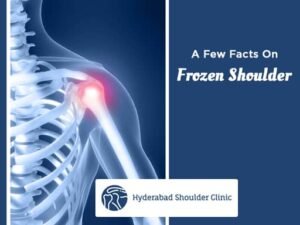Shoulder injury patterns in children and younger patients are far different from adults because of skeletal immaturity. Depending on the type of injury they have, how they are diagnosed and treated also impacts patient management. The open growth plates of children and adolescents make them particularly vulnerable to injuries. If the growth plates are fractured, it requires special surgical techniques to treat them. In order to diagnose precisely and provide appropriate treatment for shoulder injuries in children, you require an orthopaedician specially trained in bone and ligament development in children.
Common shoulder injuries in children
The shoulder of your children or any human is made up of three important bones, namely: the scapula (shoulder blade), the clavicle (collarbone), and the humerus (upper arm bone). The humerus head fits into a socket of the scapula referred to as the glenoid. This socket is lined by a thin layer of tissue called the labrum, and this labrum is connected to several ligaments. The labrum and ligaments attached to it help to stabilize the joints.

If this labrum is torn (labral tears) or damaged by any means, the shoulder joint becomes unstable. In many cases, this can only be repaired through surgery.
The rotator cuff is another major shoulder part formed by tendons and muscles. The humerus is attached to the scapula by these muscles. The rotator cuff muscles allow children to lift their arms, rotate and reach overhead. Injury or damage to the rotator cuff results in weakness, restricted movement, and joint stiffness.
Rotator cuff tears are very rare in children.
Some other common shoulder injuries in children are:
Subluxation (a partial dislocation) – A subluxation is a partial dislocation of the shoulder joint.
Dislocation – Complete dislocation of the shoulder joint.
Impingement syndrome – Shoulder impingement syndrome is a condition that occurs as a result of repetitive rubbing of muscles between the humerus and your shoulder top outer edge. Rubbing further causes swelling and narrows the space, resulting in pain and discomfort.
Little League shoulder – A Little League shoulder is a stress injury to the arm bone (humerus) close to the shoulder, which is caused by repetitive action. As a result of this stress, the growth plate widens and results in inflammation and pain in the shoulder. Overhand pitchers between the ages of 11 and 16 are most likely to experience this problem.
Multidirectional instability – Multidirectional shoulder instability (MDI) refers to a condition in which a generalized shoulder instability is observed in at least 2 planes of movement (anterior, posterior, or inferior) as a result of capsular redundancy.
Some of these problems cause significant discomfort, swelling and may require medical attention.
Treatment for shoulder problems in children
Rest – Protect the injured area by resting. Don’t allow your child to do any activities that might cause pain or soreness.
Ice – Applying ice to the damaged part of the shoulder helps to reduce pain and swelling. Don’t apply ice directly to children’s shoulders. Wrap in a soft towel or use ice or cold packs.
Medicines – doctors suggest special medicines tailored to children that reduce pain and swelling.
Physical therapy – a pediatric physio suggests some exercises and stretches to improve shoulder motion and strength.
Surgery – Surgical correction for shoulder problems in children is rare. Surgery is suggested when nonsurgical treatment doesn’t improve your child’s condition. Arthroscopic surgery is commonly used to treat shoulder problems. The procedure involves making small cuts to examine the inside of the shoulder by sending a small camera headed tube through the cuts. If there exists any tears, the doctor will repair them. In most cases, if the tear is too small to be fixed, the surgeon will debride the wounded tissue.
The time when your child needs immediate medical care

- Even after your child takes pain medicine and rests, his or her pain gets more excruciating.
- The hand, arm, or fingers of your child appear pale and feel numb.
- The arm of your child is swollen, red, and warm to the touch.
- Your child feels it difficult to move their hand and fingers.
How to prevent shoulder injuries in children?
If your child plays sports regularly, encourage them to wear protective gear that fits properly. Chest protectors and shoulder pads are a few examples.
Make sure your child eats calcium-rich foods such as milk, cheese, and yoghurt. These foods rich in calcium help to strengthen your child’s bones.
If you are concerned about your child’s shoulder problems, consult a shoulder specialist. Not sure what becomes severe for your child when they are sick or hurt? Know what to do when they can’t wait. To know more details about shoulder treatment for children, consult Dr Chandra Sekhar, one of the best orthopaedic shoulder specialists for children in Hyderabad.





